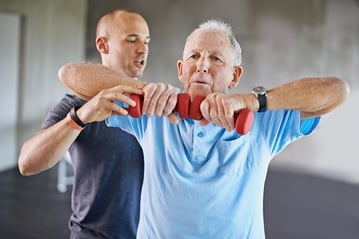 Many seniors fear cognitive decline more than any other disease associated with aging. The good news is that engaging in activities that support brain health and brain function can reduce seniors’ risk for cognitive decline and dementia. In fact, training your brain is kind of like training your body with regular exercise, and it can really complement your fitness programs with proper planning. Not sure where to start? Here are five steps to create a focus on brain training in your senior living community.
Many seniors fear cognitive decline more than any other disease associated with aging. The good news is that engaging in activities that support brain health and brain function can reduce seniors’ risk for cognitive decline and dementia. In fact, training your brain is kind of like training your body with regular exercise, and it can really complement your fitness programs with proper planning. Not sure where to start? Here are five steps to create a focus on brain training in your senior living community.
- Do your homework – Learn as much as you can about cognitive health, dementia, and brain training. The Alzheimers Association website is a great resource, and a quick search on the AARP website yields lots of great information on brain health for seniors. There are also many wonderful books on these topics, such as Spark! by John Ratey. This book really does a good job of connecting the dots between exercise, physical health, and cognitive health.
- Involve the residents – Share the things that you’re learning with residents as you learn them. This can be as simple as teaching a quick fact about the brain at the beginning of exercise classes. Use this opportunity to let the residents know that you’re starting to look into bolstering your cognitive health programming in your community. Ask for their input early to help with your program design. Ask what they already do to train their brains, what kinds of mentally engaging things they enjoy doing, and what topics they would like to learn more about or take a class on.
- Evaluate your programs and make a plan – Take a look at the current activities that you offer in your community. Do you have many mentally challenging, educational, and social opportunities on your calendar? Are there ways you can enhance your current offerings to make them more engaging? Do you have opportunities for individual brain training (i.e. using the Dakim) as well as brain training in a group setting (i.e. brain fitness class)? Determine activities you can enhance or add to your calendar, and make a plan for these changes utilizing resident input from Step two. Also, brainstorm ways that you can include brain training in your group exercise classes. For example, during cardiovascular exercise, you could assign numbers to five different exercises, and cue the exercises using their assigned numbers instead of the exercise names. Then mix it up!
- Provide education – Hold lectures to educate residents on how the brain works and what they can do to strengthen their brains and reduce their risk for cognitive decline. Be sure to point out all the ways they can participate in brain training activities at your community and let them know what new activities and enhancements are coming their way. You might also want to hold a lecture on memory strategies (or just teach one strategy at a time at the end of your exercise classes). Don’t forget to promote your fitness programs as one of the easiest ways to get started with brain training!
- Launch your program – Launch your program soon after you hold the educational lectures – consider using a brain health fair or other fun activity to get started. Begin holding your newly planned activities and enhancements on a regular basis and make sure they stand out on your calendar. Then, use a fun challenge that includes incentives for participating in mentally engaging activities and exercise to tie it all together. Once the challenge ends, celebrate residents’ success and communicate with the residents that the new opportunities for brain training will continue even though the challenge has ended.
Editor's note: Rachel did a fantastic job launching a "Mental Muscle" initiative for the residents in her community. Download the impact report from the program to get a snapshot of how well the residents received the offering and how wellness program participation was affected.
Get in touch with us to find out more about how NIFS can support brain training and other programming for your residents.


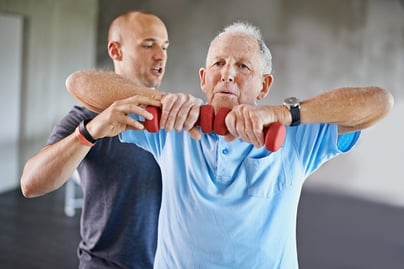 Resident wellness programs have been on the rise in senior living as consumers demand more robust and holistic options for living well. Despite the market's increasing infatuation with branding and labeling wellness in the community setting, I think the industry has a lot of room to continue to grow so that we're building programs, services, staffing, and amenities in a way to facilitate residents' desires to live well. Following are some common pitfalls that result in dated or stunted wellness programs, along with ideas for how to evolve past those sticking points.
Resident wellness programs have been on the rise in senior living as consumers demand more robust and holistic options for living well. Despite the market's increasing infatuation with branding and labeling wellness in the community setting, I think the industry has a lot of room to continue to grow so that we're building programs, services, staffing, and amenities in a way to facilitate residents' desires to live well. Following are some common pitfalls that result in dated or stunted wellness programs, along with ideas for how to evolve past those sticking points.
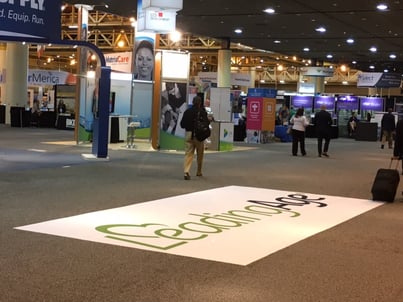 This week more than 7,000 professionals working in senior housing and related businesses converged in New Orleans, LA, to share their passions, learn from each other, and return back to their communities inspired to continue doing great work for the older adults they serve. I was honored to be at the
This week more than 7,000 professionals working in senior housing and related businesses converged in New Orleans, LA, to share their passions, learn from each other, and return back to their communities inspired to continue doing great work for the older adults they serve. I was honored to be at the .jpg?width=320&name=LeadingAge%202017%20(2).jpg) As I sat in the
As I sat in the 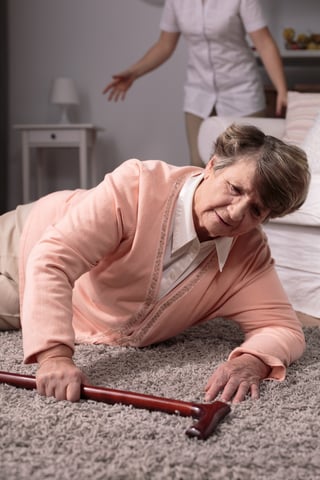 The numbers are clear:
The numbers are clear: 



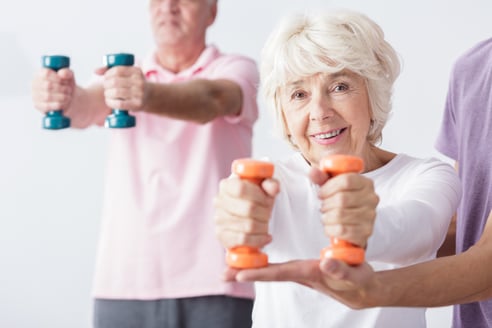 The benefits of regular activity for individuals throughout their lifespan is clear through the many (many, many) studies that outline how much movement is enough and which elements of health are improved with activity. However, despite the research, people in the U.S. still simply don't get enough activity to sustain health benefits, and
The benefits of regular activity for individuals throughout their lifespan is clear through the many (many, many) studies that outline how much movement is enough and which elements of health are improved with activity. However, despite the research, people in the U.S. still simply don't get enough activity to sustain health benefits, and 

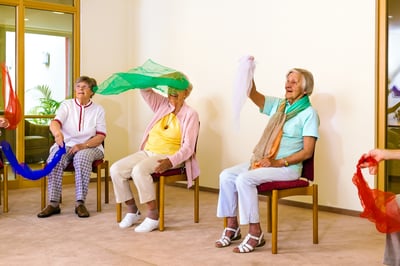 While we've seen significant progress in what exercise can look like for residents in independent living (IL), for many communities, there remains something of a disconnect in making sure residents throughout the continuum of care have access to the same or similarly robust services and amenities.
While we've seen significant progress in what exercise can look like for residents in independent living (IL), for many communities, there remains something of a disconnect in making sure residents throughout the continuum of care have access to the same or similarly robust services and amenities. 
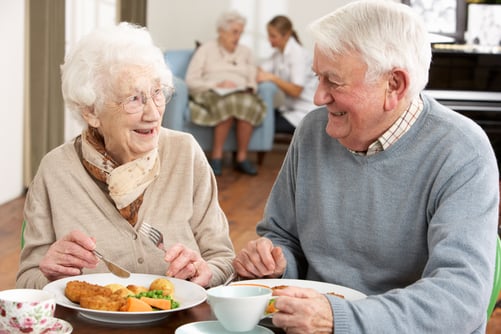 The biggest change, however, is the fact that you no longer have to think about what’s for dinner, or lunch, or even breakfast. What a joy! My husband and I have the same exact conversation every day at around 5:30pm: What’s for dinner? I don’t know. What do you want? I don’t care. What do we have lying around that I can toss together quickly? I don’t know, eggs, a salad? And we end up usually having a salad, maybe with an omelet. Easy, but sooo boring.
The biggest change, however, is the fact that you no longer have to think about what’s for dinner, or lunch, or even breakfast. What a joy! My husband and I have the same exact conversation every day at around 5:30pm: What’s for dinner? I don’t know. What do you want? I don’t care. What do we have lying around that I can toss together quickly? I don’t know, eggs, a salad? And we end up usually having a salad, maybe with an omelet. Easy, but sooo boring.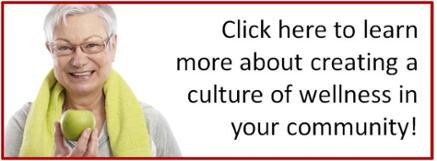
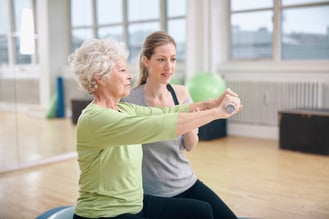 and activities for residents, I’m often surprised at what an afterthought their exercise amenities and services are. The clear appetite to provide residents with the very best options for living just doesn’t square with what’s in place for resident exercise at the community.
and activities for residents, I’m often surprised at what an afterthought their exercise amenities and services are. The clear appetite to provide residents with the very best options for living just doesn’t square with what’s in place for resident exercise at the community.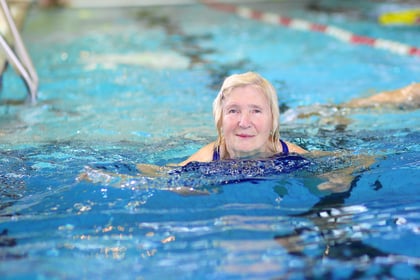 I got a call from a resident of a senior living community the other day. She told me that she’d been thinking about how her community could do better with the exercise program it offers. She saw a lot of potential to build on already successful offerings, and she’d been working with a resident team on this idea. Over the last several weeks, she’d been all over our website and decided it was time to talk about how we might be able to support her team’s goal to report on options to improve the community’s exercise program.
I got a call from a resident of a senior living community the other day. She told me that she’d been thinking about how her community could do better with the exercise program it offers. She saw a lot of potential to build on already successful offerings, and she’d been working with a resident team on this idea. Over the last several weeks, she’d been all over our website and decided it was time to talk about how we might be able to support her team’s goal to report on options to improve the community’s exercise program. 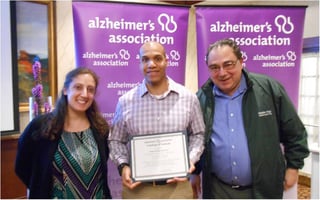 One of our clients put the
One of our clients put the 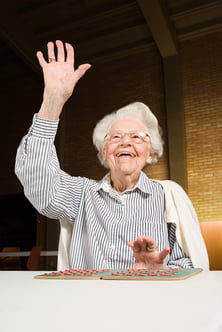 Fund-raising Events
Fund-raising Events